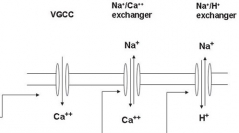

 Cryptogamie, Algologie
33 (2) - Pages 99-103
Cryptogamie, Algologie
33 (2) - Pages 99-103The complexity of effects exerted by palytoxin (PlTX) in biological systems is apparent from responses observed in different models. We have approached this complexity by proteomic analyses, to study responses induced by PlTX at a system level. The analysis of a sub-proteome of a human cell line has shown that PlTX causes changes in phosphorylation states of Hsp27 and the oxidation of DJ-1, supporting the conclusion that cell stress responses, including oxidative damage, participate to the cytotoxic effect of PlTX. A descriptive meta-analysis of proteomic data about toxic responses induced by other classes of microalgal toxins, such as okadaic acid and microcystins, reveals that several protein components participating to cell stress responses, particularly oxidative stress, are affected when the systems are exposed to effective doses of those toxins. Detected changes comprise either the total levels of individual proteins, or the relative proportions of isoforms distinguishable according to their post-translational modifications. A common set of protein effectors emerges from our analysis, suggesting that cytotoxic effects exerted by some biotoxins could share molecular processes executing cell death responses.